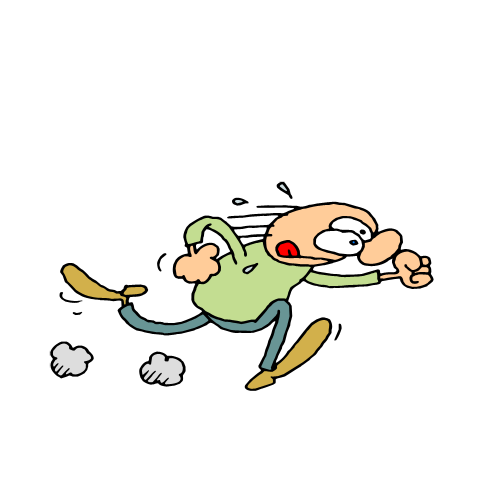By Josi S. Kilpack
The pace of a novel essentially means the rate at which your story unfolds. For the reader, it's about how quickly the action builds in your story. For the writer, it's manipulating time so that you show and tell in the appropriate places and hold the reader's attention perfectly from one scene to another. A book that moves too slowly will lose reader interst, a book that moves to fast will overwhelm them.
Complex, compound, and complex-compound sentences slow down the pace of your writing and offers you the chance to develop your character, describe a scene, give sensory details, and allow your character (and reader) time to reflect, consider, plan, and prepare. Regardless of genre, some slower paced portions are necessary in every novel. Longer sentences give way to longer paragraphs, softer verb usage, and other things that keep things moving, but not so fast there there isn't time to contemplate.
Short, simple, punchier sentences, on the other hand, speed things up and keep the reader reading so fast that there isn't time to think so much. A fast pace is essential in action scenes and to create an emotional reaction from your reader. Shorter sentences give way to shorter paragraphs and crisp verbs that keep the impact high when you want to keep your reader glued to the page.
What pace is the right pace for your novel is determined by several factors: genre, market, character vs. plot driven, etc. How you manipulate the time, and subconsciously cue the reader as to how fast they should be reading, is often controlled by punctuation. Think of it in regard to driving, and how we are 'cued' by signs, signals, and other elements of the American roadways. Punctuation does the exact same thing for your reader:
Period = stop (full brake)
Comma = pause (slow brake before speeding back up)
Ellipsis . . . = pause during continuation (rubbernecking)
Semicolon = longer pause (rolling through a stop sign)
Exclamation point = stop (yelled stop from the passenger--think about how many of those you can take before you smack someone upside the head :-)
Question mark = pause + prod (sharp turn--not a stop because the need for an answer creates a continuum)
Em-dash = pause + aside (slowing down to read a billboard)
Understanding how a reader interprets these 'signals' allows you to better manipulate the time elements within your story and have it received the way you want it to be. For example:
Example #1:
The coldness of his body convinced her that he was dead and she waited to feel regret. Instead she only felt a long lost sense of freedom.
Vs.
He was dead. Cold. She was free
*Both versions say the same thing, but in a different way and at a different rate. Neither is wrong, just different. they make a different kind of impact.
Example #2:
He watched his mother go about her morning routine and wondered how she would react to what he knew he had to tell her. Would she freak out? Would she calmly think it through? Or would she ignore it and pretend it hadn't happened at all. She made the coffee and her toast, offering both to him, but he couldn't eat. Not yet. Not until he finally came clean and changed her life forever.
Vs.
"Do you want coffee?" Mom asked, looking over her shoulder with her eyebrows raised.
"No thanks," he said.
"Toast?" she continued.
"No," he said again. He didn't dare eat until this was over with.
"No," he said again. He didn't dare eat until this was over with.
Would she go through her usual routine tomorrow, he wondered? Or would she stay in bed, still trying to come to grips with everything. Would things ever be the same between them? It was impossible to know. He'd never had the power to hurt her this much.
"Mom?" he said.
"Yeah sweetie?"
"There's something I need to tell you."
*Again there is no right or wrong here, but dialogue naturally lends itself to a faster pace due to the short sentences and simple structures. Both examples still communicate pretty much the same thing, but the style is different and the punch is different. In the second one we feel a little more of an emotional reaction, in the first one we get a little more character development and longer processing time.
As I said, there are many things that influence pacing, punctuation is simply one of those tools. Play with it. Experiment. Create.








3 comments:
Love this. Can I steal as an intro to the high school creative writing class I teach?
Absolutely, Tasha. Thanks for asking. I'm flattered1 :-)
Good stuff! I enjoyed your class at the conference as well--good presentation. Nice job.
Post a Comment